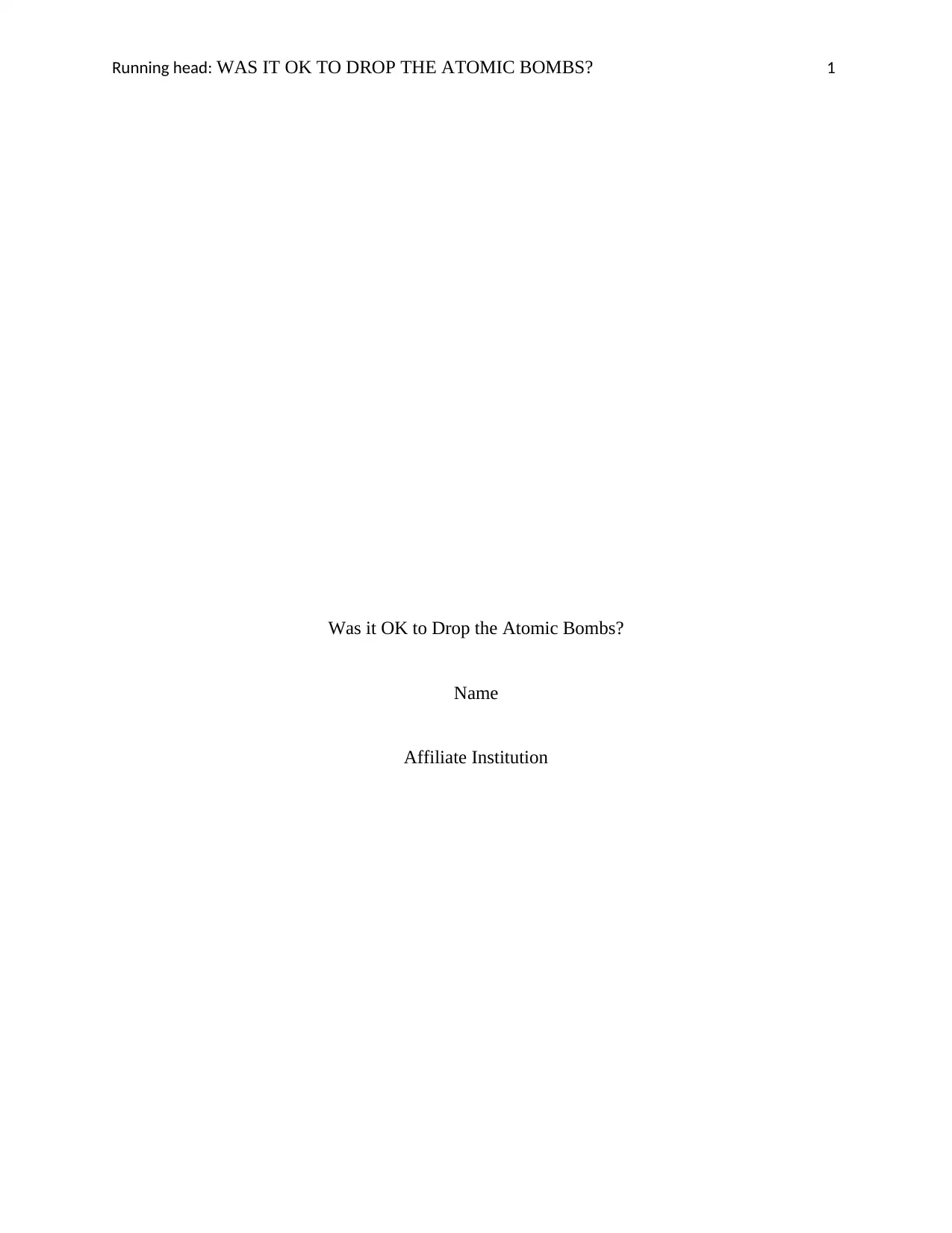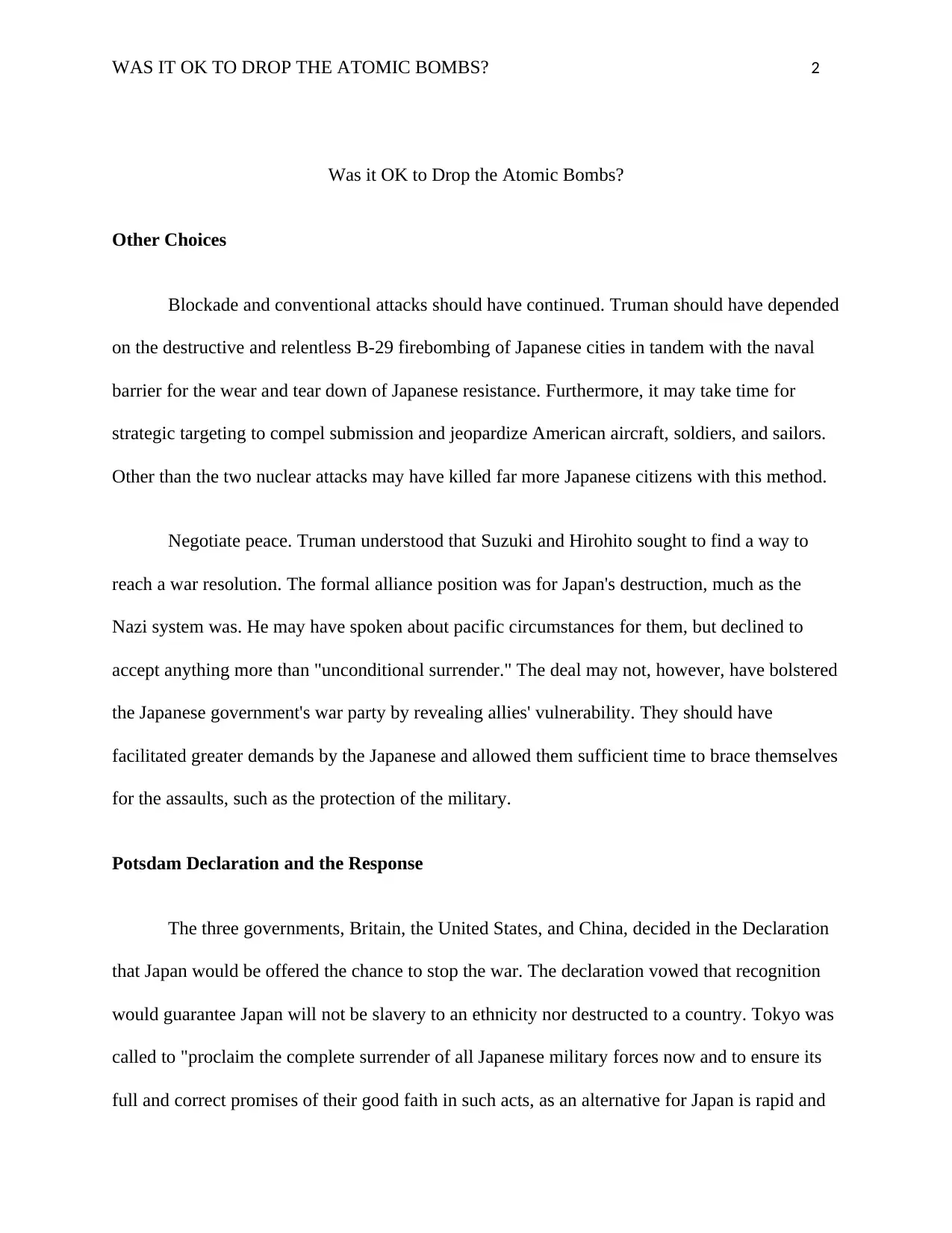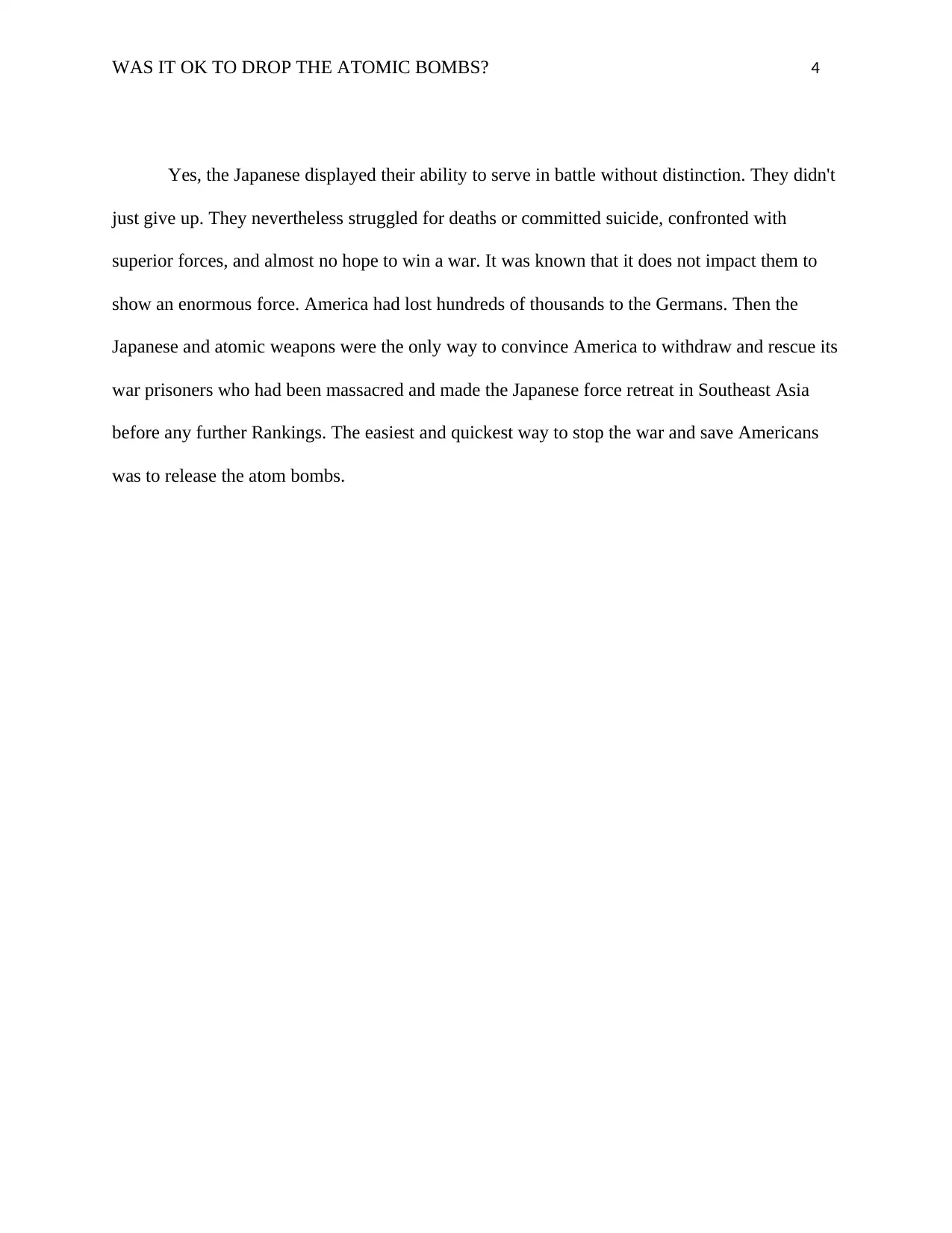Analyzing the Decision: Was Dropping Atomic Bombs on Japan Justified?
VerifiedAdded on 2022/08/02
|4
|760
|15
Essay
AI Summary
This essay critically examines the ethical and strategic considerations surrounding the decision to drop atomic bombs on Hiroshima and Nagasaki during World War II. The essay begins by exploring alternative choices available to the United States, such as continuing the blockade and conventional attacks or negotiating peace, and evaluates their potential effectiveness and consequences. It then analyzes the Potsdam Declaration and the Japanese response, assessing whether the communication was clear enough to avoid the bombings. The essay further investigates the extent of the destruction caused by the atomic bombs, considering the immense loss of life and the long-term impact on the cities and their inhabitants. Ultimately, the essay argues that the use of atomic bombs was justified, considering the Japanese military's unwavering resistance and the potential for saving American lives. This essay provides a comprehensive overview of the historical context, ethical dilemmas, and strategic calculations that shaped this critical moment in history, and offers an in-depth analysis of the complex factors that influenced the decision to drop the atomic bombs.
1 out of 4











![[object Object]](/_next/static/media/star-bottom.7253800d.svg)